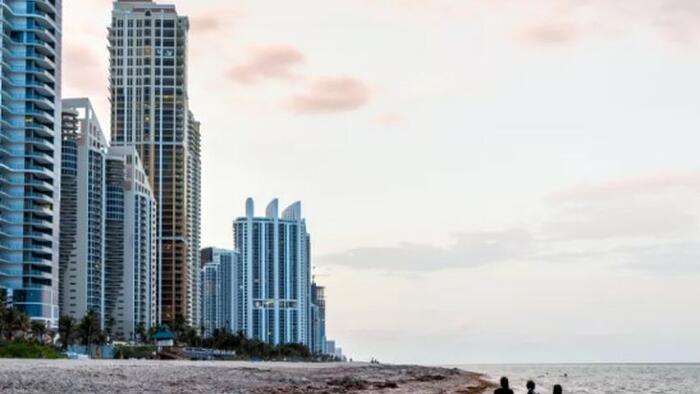A recent study published in Earth and Space Science has unveiled alarming findings regarding the subsidence of luxury high-rise buildings in South Florida, particularly in areas like Sunny Isles Beach, Surfside, Miami Beach, and Bal Harbour. Conducted by a consortium of researchers from prestigious institutions including the University of Miami, Florida Atlantic University, and Caltech, the study identified that around three dozen luxury condos and hotels are experiencing noticeable sinking. This phenomenon was assessed using Interferometric Synthetic Aperture Radar (InSAR) data, which revealed that these structures have sunk between 2 to 8 centimeters from 2016 to 2023. The implications of this study are significant, considering the rapid development and construction patterns seen in South Florida’s real estate market, especially after 2014.
The research highlights that while some degree of settlement is typical during and following the construction of high-rise buildings, the extent and continuity of subsidence in these luxury properties are concerning. Most of the impacted structures were erected more recently, indicating that the combination of modern construction methods and environmental factors may be contributing to their instability. The study indicates a pattern wherein subsidence typically slows down over time; however, in certain instances, it continues at a consistent pace, hinting that some buildings may face prolonged sinking issues. This particular observation raises questions about the long-term sustainability of these high-value real estate investments, particularly in a climate-vulnerable region.
The study authors proposed that the subsidence observed could be attributed to multiple interrelated factors. One primary cause identified is the densification of sand grains within the limestone layers beneath these buildings, a process that can be exacerbated by external influences such as construction vibrations, groundwater dynamics, tidal movements, or even stormwater injection techniques used during or post-construction. The researchers were taken aback by the extent of the subsidence hotspots along the South Florida coastline, emphasizing the necessity for continuous monitoring of these phenomena. This newfound understanding is crucial, as it may directly impact property values, insurance costs, and urban planning initiatives in the area.
The findings underscore the pressing need for further research and monitoring to assess the long-term impacts of subsidence on these luxury buildings. As the residential and commercial real estate market continues to burgeon in South Florida, it becomes imperative to establish a comprehensive strategy for evaluating the geological and hydrological factors that are contributing to such extreme cases of subsidence. Developers, city planners, and homeowners alike must recognize that subsidence poses not only a threat to individual properties but also to the broader community infrastructure and overall safety.
The implications of the study extend beyond just the properties identified; they provoke a broader conversation about the sustainability of coastal development in the face of changing environmental factors. As climate change continues to affect sea levels and weather patterns, areas like South Florida could increasingly see challenges in maintaining their luxurious lifestyle without facing the repercussions of their geographical vulnerabilities. Protective measures and preventative strategies will be critical in addressing these concerns, as the real estate market is deeply intertwined with the ecological wellbeing of the region.
In conclusion, the findings from the collaborative study bring to light the conservation challenges faced by high-rise buildings in South Florida, prompting both immediate action and future considerations for urban dwellers and developers. With ongoing climate challenges and geological concerns affecting structural integrity, the need for vigilant monitoring and innovative construction practices has never been more critical. As this research illustrates, the key to future real estate development lies not only in building grand structures but in ensuring their stability and safety for generations to come in an ever-changing environmental landscape.

